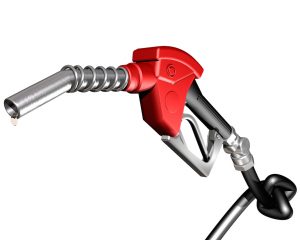Demand for gasoline across the the country is signaling that Americans are filling up more, according to AAA.
For Kentuckians, that’s also meant higher prices at the pump. In the past week, the average gas price for unleaded in Kentucky has jumped 9 cents to land at $2.10. That’s the biggest leap of any state in the nation, week over week. It also lands Kentucky the number five spot on the leaderboard for states with the largest gas price increase over the past month.
Gasoline demand, as estimated by the Energy Information Administration (EIA), increased 10 percent on the week, climbing from 7.8 million barrels to 8.6 million barrels. While the demand rate is much lower than a typical summer reading, it’s the highest recorded since late March, showing continued signs of increased demand for gasoline. Today’s national average gas price for unleaded rests at $2.18.
 “The increase in gasoline demand contributed to a 9-cent jump in the average price for gas in Kentucky and a 4-cent jump in the national average over the past week,” says Lori Weaver Hawkins, public and government affairs manager, AAA Blue Grass. “While that average will continue to increase ahead of the Independence Day holiday weekend, travelers will find pump prices about 50 cents cheaper than last year’s holiday.”
“The increase in gasoline demand contributed to a 9-cent jump in the average price for gas in Kentucky and a 4-cent jump in the national average over the past week,” says Lori Weaver Hawkins, public and government affairs manager, AAA Blue Grass. “While that average will continue to increase ahead of the Independence Day holiday weekend, travelers will find pump prices about 50 cents cheaper than last year’s holiday.”
AAA did not release an Independence Day holiday travel forecast this year, but does forecast that Americans will take 683 million road trips from July 1 through Sept. 30.
Before you hit the road for the holiday or a summer trip, AAA recommends:
-Make sure your vehicle is road trip ready. Have your engine and oil levels checked.
-Include an emergency road kit in your vehicle with an extra cell phone charger, first-aid kit, a blanket, flashlight, basic tools, jumper cables, and gloves.
-Visit AAA’s COVID-19 Travel Restrictions Map at TripTik.AAA.com for the latest state and local travel restrictions.
-Pack face coverings, hand sanitizer, sanitizing wipes, gloves and a thermometer.
-Take all necessary travel documentation, including health insurance cards.
Gas Prices Around the Bluegrass
Today’s average of $2.10 in Kentucky is up 9 cents from last week and 26 cents from a month ago, but still considerably lower than the average of $2.58 seen a year ago. In Lexington, the average price jumped 15 cents in the past week, landing at $2.14. That’s 35 cents higher than a month ago.
In Nicholasville, the average price is up 11 cents, now averaging $2.09. Georgetown is also up 11 cents, now at $2.15. Versailles is up 12 cents to land at $2.16, while Winchester is up just 4 cents to land at $2.14. Richmond is up 12 cents, moving from $2.04 to $2.16 on the week.
Quick Stats
The nation’s top 10 largest weekly increases: Kentucky (+9 cents), Michigan (+9 cents), West Virginia (+9 cents), North Carolina (+8 cents), Colorado (+8 cents), Indiana (+8 cents), South Carolina (+7 cents), Pennsylvania (+7 cents), Minnesota (+6 cents) and Georgia (+6 cents).
Want more great content like this?
Become a sustaining member of NKyTribune with a tax-deductible donation today and help us continue to provide accurate, up-to-date local news and information you can depend on.
The nation’s top 10 largest monthly increases: Colorado (+41 cents), Montana (+35 cents), West Virginia (+28 cents), Kansas (+28 cents), Kentucky (+27 cents), North Dakota (+27 cents), Delaware (+27 cents), South Carolina (+26 cents), Texas (+24 cents) and North Carolina (+24 cents).
Great Lakes and Central States
It was a volatile week at the pump across the Great Lakes and Central States. Kentucky (+9 cents), Michigan (+9 cents) and Minnesota (+6 cents) saw the largest increases in the region and land on the top 10 list for largest weekly jumps in the country.
Gasoline stocks in the region saw a substantial 1.9 million barrel draw, which is one reason for the fluctuation in gas prices. However, refinery rates saw the largest increase, at 7 percent, of any region in the country, according to EIA data, which could lead to a build in stocks in the agency’s next report and smaller increases at the pump.
Oil Market Dynamics
At the end of Friday’s formal trading session, West Texas Intermediate (WTI) decreased by 23 cents to settle at $38.49 per barrel. Domestic crude prices pushed cheaper last week due to an increase in new coronavirus infections worldwide, which could suppress crude demand if stay at home orders increase.
For this week, crude prices could continue to decline if the market continues to worry that efforts to stimulate the global economy will falter because of uncontained outbreaks.
Learn more at AAA.com/mobile.
From AAA Blue Grass






















